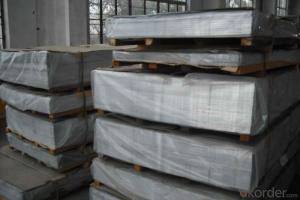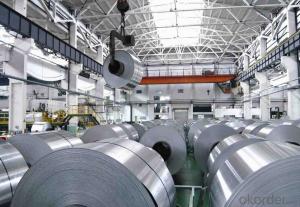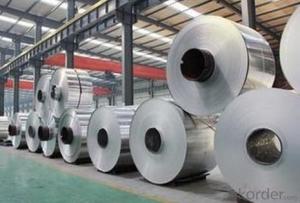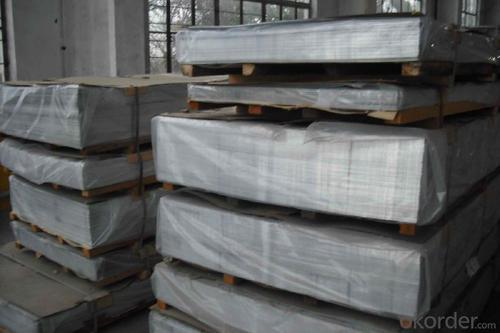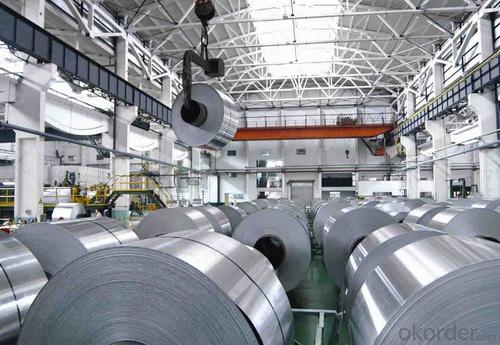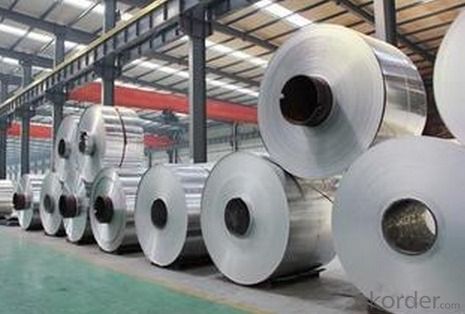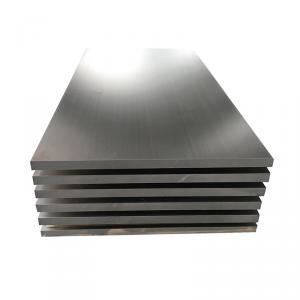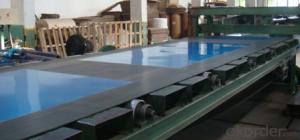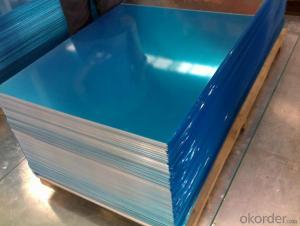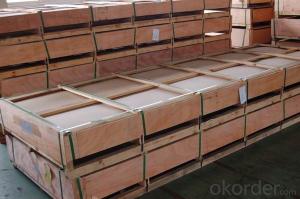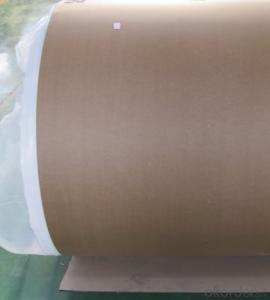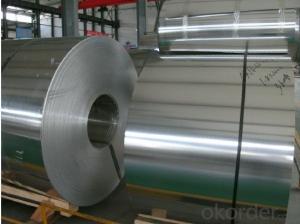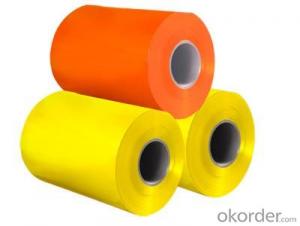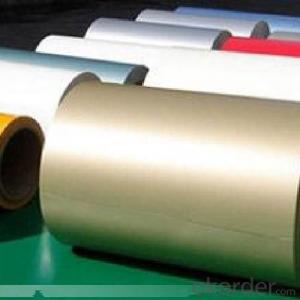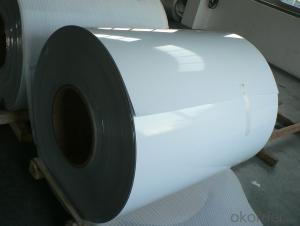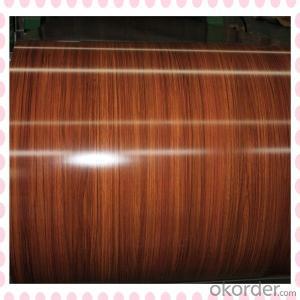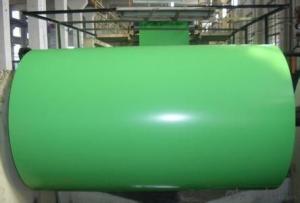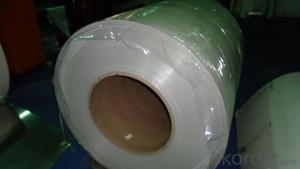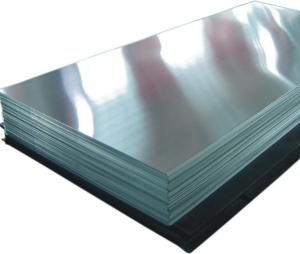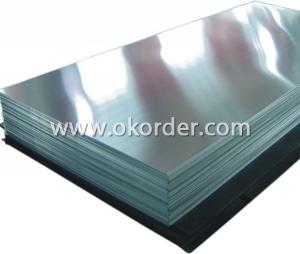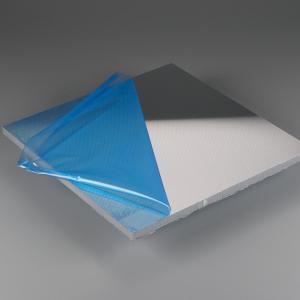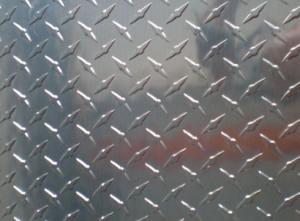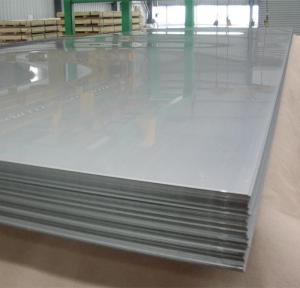5 X 5 Aluminum Foil Sheets - Prepainted Aluminum Coil with PVC Film Protection
- Loading Port:
- Shanghai
- Payment Terms:
- TT OR LC
- Min Order Qty:
- 1 m.t.
- Supply Capability:
- 2000 m.t./month
OKorder Service Pledge
OKorder Financial Service
You Might Also Like
Specification
Structure of Prepainted Aluminium Coil PPGL Description:
Prepainted aluminum coil with PVC Film AA3105/3003 is designed for aluminum composite panel ACP . Prepainted aluminum coil with PVC Film AA3105/3003 is hard and everlasting under the blazing sun. You can choose the alloys as your habitation and we will do our best to meet your request
Main Features of Aluminium Coil PPGL:
1) Perfect weather ability, high strength, no special maintenance
2) Convenient construction, short working time
3) Excellent machining heat insulation, sound insulation property and perfect fireproof performance
4) High plasticity, good impact resistance, quakeproof performance and reducing buildings load
5)Goods smoothness, lightweight and rigid, beautiful and cheap
6) Various colors available
7) Simple machining equipments, processing in spot.
Images of Aluminium Coil PPGL:
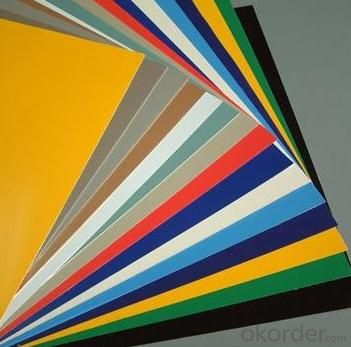
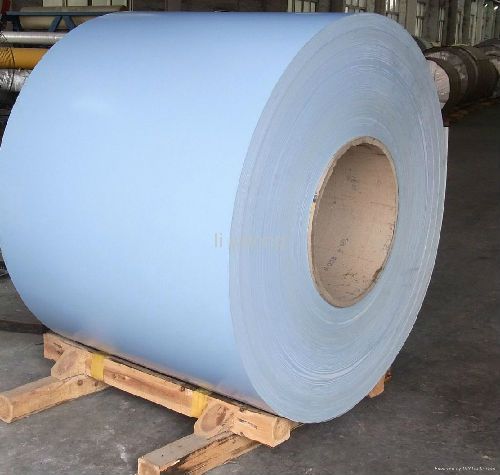
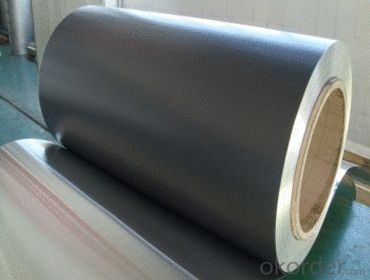
Aluminium Coil PPGL Specification:
Product Name | Aluminum Coil |
Alloy | A1100,A3003,A1050,A8011,A3105,A5005 etc |
Thickness | 0.022mm to 3.0 mm |
Width | Standard width:1240mm; 1200mm |
All width: 30mm - 1600mm | |
Diameter | out dia:1200mm |
Interior dia: 405mm,505mm | |
Weight | 2.5 T/coil,3.0 T/coil |
Coating | PE,PVDF,ACRYLIC |
Surface | Embossed, mill finish, coated; aluminum gutter coil |
Color | AS to all RAL color |
Gloss | 10-90%(EN ISO-2813:1994) |
Coating Thickness | PE: more than 18 micron |
PVDF: more than 25 micron | |
Coating Hardness (pencil resistance) | More than 2h |
Coating adhesion | 5J(EN ISO-2409:1994) |
Impact Resistance | No peeling or cracking(50 kg/cm,ASTMD-2794:1993) |
Flexibility (T-bend) | 2T |
MEK resistance | More than 100 |
FAQ of Aluminium Coil PPGL:
1.Superior quality of raw material.
2.Reasonable and stable chemical composition.
3.Accurate tolerance.
4.Goode mechanical property.
5.We have the certificate of ISO9001.
- Q: Are aluminum sheets suitable for electrical busbars?
- Electrical busbars can indeed be made from aluminum sheets. Aluminum is extensively used in the electrical industry due to its exceptional electrical conductivity, lightweight properties, and affordability in comparison to metals like copper. Aluminum sheets can be easily shaped and sized to fit the required dimensions for busbars, making them a versatile choice for electrical applications. Moreover, aluminum possesses commendable thermal conductivity, aiding in the dissipation of heat generated during electrical operations. However, it is crucial to acknowledge that aluminum has a lower electrical conductivity than copper, necessitating larger cross-sectional areas to achieve equivalent electrical performance. Consequently, it is vital to consider the specific requirements of the electrical system and seek expert advice to determine the suitability of aluminum sheets for a particular busbar application.
- Q: What is the weight of a standard aluminum sheet?
- The weight of a standard aluminum sheet can vary depending on its thickness, dimensions, and grade. On average, a standard aluminum sheet weighs around 2.7 grams per cubic centimeter (g/cm³).
- Q: How do aluminum sheets perform in terms of thermal expansion?
- Aluminum sheets exhibit a relatively high coefficient of thermal expansion, causing them to expand significantly under heat and contract when cooled. This behavior stems from aluminum's nature as a metal with a relatively low melting point and excellent heat conductivity. Heating aluminum sheets increases the energy of its metal atoms, causing them to vibrate and move more rapidly, resulting in expansion. Conversely, cooling the sheets reduces their energy, causing the metal atoms to slow down and move closer together, leading to contraction. Therefore, it is crucial to consider the thermal expansion properties of aluminum sheets when using them in applications that involve temperature fluctuations, as this can impact the material's overall dimensions and performance.
- Q: How do you prevent galvanic corrosion when using aluminum sheets with other metals?
- To prevent galvanic corrosion when using aluminum sheets with other metals, there are several measures that can be taken: 1. Use a protective coating: Applying a protective coating, such as paint or anodizing, on the aluminum surface can create a barrier between the aluminum and other metals, preventing direct contact and reducing the risk of galvanic corrosion. 2. Insulate the metals: Placing a non-conductive insulating material, such as rubber or plastic, between the aluminum and other metals can help isolate them and prevent galvanic corrosion. 3. Choose compatible metals: Selecting metals that are less prone to galvanic corrosion when in contact with aluminum can reduce the risk. For example, stainless steel, titanium, or other corrosion-resistant alloys are often preferred when working with aluminum sheets. 4. Use dielectric materials: Inserting a dielectric material, such as nylon or Teflon washers, between the aluminum and other metals can act as a barrier and inhibit the flow of electrical current, thereby preventing galvanic corrosion. 5. Control the environment: Avoiding environments with high moisture levels or extreme temperature variations can help reduce the likelihood of galvanic corrosion. Proper ventilation and moisture control can also play a significant role in preventing this type of corrosion. It is important to note that the best preventive measures may vary depending on the specific application and the types of metals involved. Consulting with a materials engineer or corrosion specialist can provide valuable guidance in selecting the most appropriate strategies to prevent galvanic corrosion in a particular scenario.
- Q: Are aluminum sheets suitable for automotive body panels?
- Yes, aluminum sheets are suitable for automotive body panels for several reasons. Firstly, aluminum is a lightweight material, which helps improve fuel efficiency and overall vehicle performance. This can result in better acceleration, handling, and braking. Additionally, the use of aluminum body panels can contribute to reducing the overall weight of the vehicle, which is particularly important for electric vehicles, as it can extend their range. Secondly, aluminum has excellent corrosion resistance properties. It naturally forms a protective oxide layer on its surface, which helps prevent rusting and deterioration caused by exposure to various weather conditions. This makes aluminum sheets highly durable and long-lasting, ensuring that automotive body panels maintain their structural integrity over time. Furthermore, aluminum is highly malleable and can be easily formed into complex shapes using various manufacturing techniques such as stamping, extrusion, and hydroforming. This allows for greater design flexibility, enabling automakers to create vehicles with sleek and aerodynamic body styles. Additionally, aluminum can be easily joined through welding or adhesive bonding, making it easier to assemble and repair automotive body panels. Moreover, aluminum is a sustainable material as it is highly recyclable. Recycling aluminum requires significantly less energy compared to primary production, resulting in reduced greenhouse gas emissions. This aligns with the growing emphasis on sustainability and environmental consciousness in the automotive industry. Overall, the use of aluminum sheets in automotive body panels offers numerous advantages such as improved fuel efficiency, corrosion resistance, design flexibility, and sustainability. These factors make aluminum a suitable and increasingly popular choice for automakers aiming to enhance the performance, durability, and environmental friendliness of their vehicles.
- Q: Is aluminium plate the same as aluminium alloy?
- In fact, it means that the world can not meet the so-called aluminum plate, that is, pure aluminum alloy is only a little more than pure aluminum alloy, but the scope of the use is also different
- Q: What is the standard size of an aluminum sheet?
- The standard size of an aluminum sheet can vary depending on the specific application and industry. However, common standard sizes for aluminum sheets range from 4 feet by 8 feet (48 inches by 96 inches) to 5 feet by 10 feet (60 inches by 120 inches).
- Q: What's the price of the 6mm aluminum sheet?
- The single aluminum plate is aluminum substrate, around the hem (can be customized size and shape) and install bracket forming a mounting edge, the surface of the fluorocarbon coating (various colors can be customized).
- Q: What are the different alloys used in aluminum sheets?
- Aluminum sheets utilize a variety of alloys, each possessing its own distinct properties and characteristics. Some commonly employed alloys include: 1. Alloy 1100: Renowned for its exceptional corrosion resistance and superior electrical conductivity, this alloy finds extensive utilization in applications necessitating high formability and weldability. Examples include food packaging and electrical conductors. 2. Alloy 3003: Esteemed for its formidable formability, moderate strength, and outstanding corrosion resistance, this alloy enjoys widespread application in cooking utensils, chemical equipment, and general sheet metal work. 3. Alloy 5052: Recognized for its robust strength and commendable corrosion resistance, this alloy frequently finds application in marine settings, as well as aircraft fuel tanks and automotive components. 4. Alloy 6061: One of the most versatile and frequently employed aluminum alloys, this variant boasts excellent corrosion resistance, satisfactory weldability, and moderate strength. It is commonly utilized in structural components like frames and railings, as well as automotive and aerospace applications. 5. Alloy 7075: Distinguished by its impressive strength-to-weight ratio and exceptional fatigue resistance, this alloy is often chosen for applications necessitating formidable strength, such as aircraft and aerospace components, as well as high-performance sporting goods. These examples merely scratch the surface of the numerous alloys employed in aluminum sheets. The selection of a particular alloy hinges on the specific requirements of the application, encompassing factors such as strength, corrosion resistance, formability, and weldability.
- Q: I just built a stone wall with illuminated glass features embedded, and to make them shine evenly, I had all sides but the visual one wrapped in industrial thickness aluminium foil. One week later, the foil has disintegrated. I have used type 10 Portland. What is going on?
- Embedded aluminum roof flashing, aluminum water stops, aluminum electrical conduit, introduced aluminum powder (sometimes used to foam concrete), or embedded structural aluminum shapes may all corrode in concrete or mortar. In all cases, a reaction that forms aluminum hydroxide and hydrogen gas occurs, and may cause expansion and cracking of the concrete or mortar. The common use of calcium chloride (or other alkali compounds), and dampness of the concrete increases the reaction rate. Usually, coating the aluminum with bituminous paint, impregnated paper or felt, plastic, or an alkali-resistant coating will prevent or sharply reduce the corrosion.
Send your message to us
5 X 5 Aluminum Foil Sheets - Prepainted Aluminum Coil with PVC Film Protection
- Loading Port:
- Shanghai
- Payment Terms:
- TT OR LC
- Min Order Qty:
- 1 m.t.
- Supply Capability:
- 2000 m.t./month
OKorder Service Pledge
OKorder Financial Service
Similar products
Hot products
Hot Searches
Related keywords
